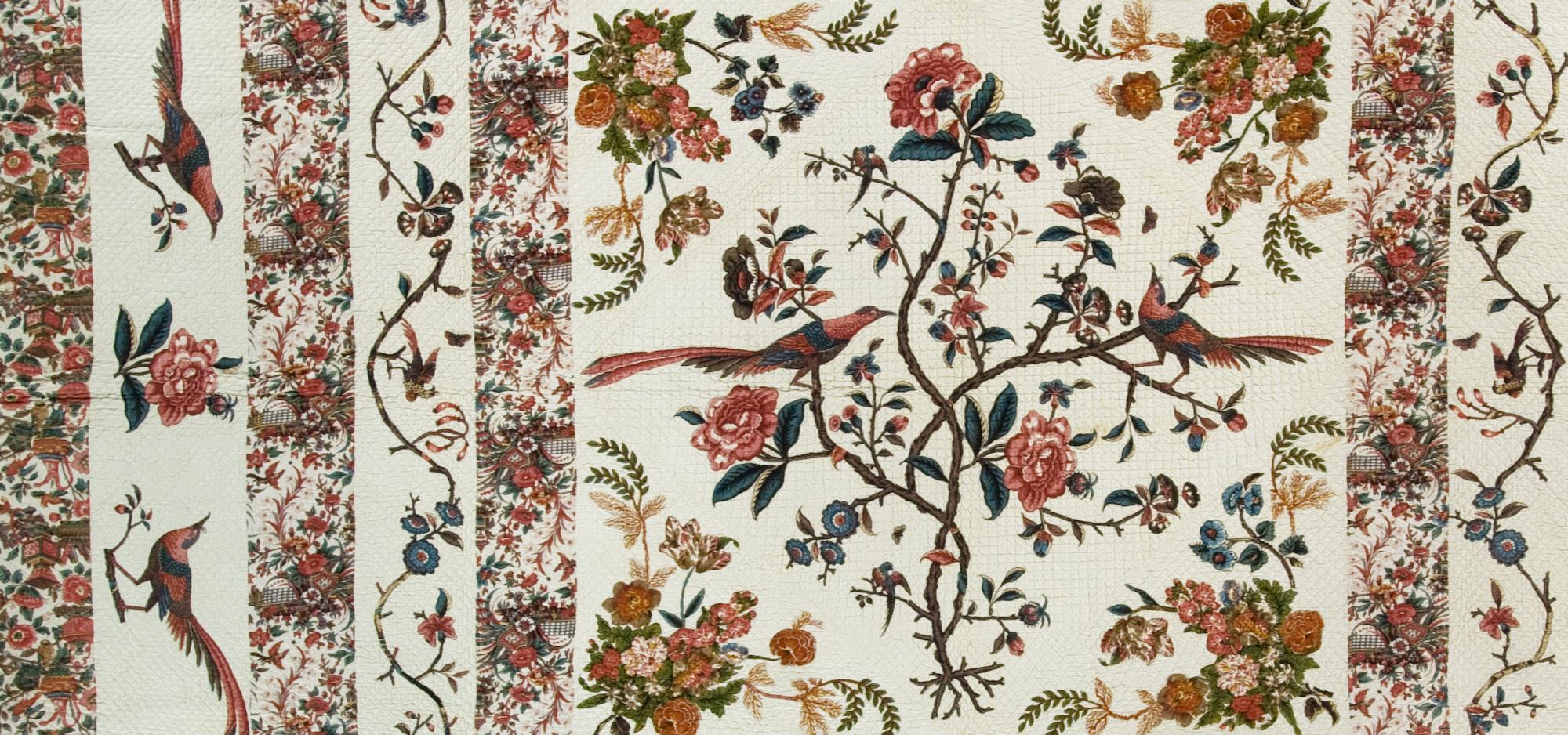
Chintz Appliqué
Nov 22, 2008-May 17, 2009
From Imitation to Icon

Inspired by the painted and printed cottons of India, famous for their lively beauty and lasting qualities, the stunning colors and artistry of chintz appliqué quilts made them icons in the nineteenth century. They are considered among the most beautifully crafted, vibrantly colored and largest quilts ever made in America. The 21 quilts, circa 1790-1850, presented in the exhibition organized by Curator of Collections Carolyn Ducey, give a glimpse into their makers' lives and society.
Inventive American and European women imitated the look of costly Indian textiles by cutting and applying pieces of chintz to neutral backgrounds. Chintz, polished cotton of verdant foliage and leaves colored in multiple rich hues, was unlike anything Europeans had known. Its lustrous beauty evoked visions of strange cultures and unknown lands. Challenges in international trade, trade imbalances and consumer demands mark the story of the chintz evolution.
Printed cottons came to Europe from India, first as a novelty, used initially as barter in the three-way trade for spices in the late 1500s. The overwhelming popularity of these printed cottons strained the important wool and silk markets in England and France in the final years of the seventeenth century, leading to government bans on Indian imports in Great Britain. At the same time, European manufacturers tried to meet the high demand for printed cotton fabrics by mastering the complex dyeing methods. New mechanized processes led to faster and less expensive cotton spinning, weaving and printing. By the time trade restrictions were relaxed in the mid-1770s, British manufacturers had cornered the market, effectively eliminating India from the trade.
American chintz appliqué quilts were almost exclusively constructed of British printed fabrics. The British maintained tight control of chintz production until the 1830s when the United States became a player in the cotton printing industry. Chintz appliqué quilts were made during a period of marked changes in all aspects of American society. Family-oriented rural communities, in which most of life's necessities were produced by a family's own labor, were altered as families moved to urban centers and took on factory jobs. Manufactured goods became plentiful and affordable and paychecks provided the means to purchase fashionable items. Textile markets boomed and change appeared in the fabric of American lives. This exhibition explores one aspect of that pivotal time in America's history.
The quilts come from America's Eastern seaboard, including pieces from the Delaware Bay area of Philadelphia and Baltimore, and others from Virginia and the Carolinas. They are drawn primarily from the center's Ardis and Robert James Collection and the Byron and Sara Rhodes Dillow Collection.
Rosemary Crill, Senior Curator in the Asian department at the Victoria and Albert Museum in Great Britain presented a lecture, underwritten by the Byron and Sara Rhodes Dillow Excellence Fund as part of the exhibition